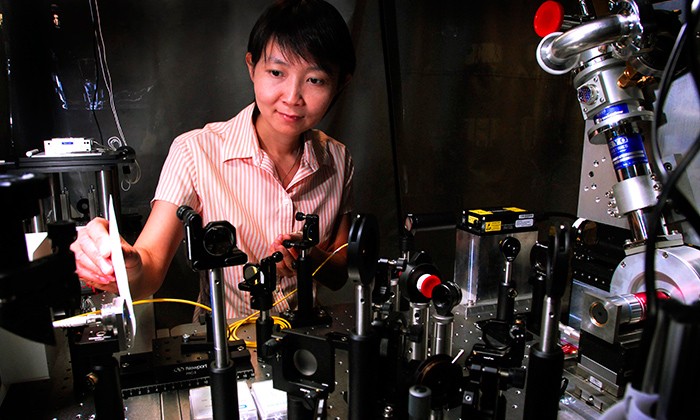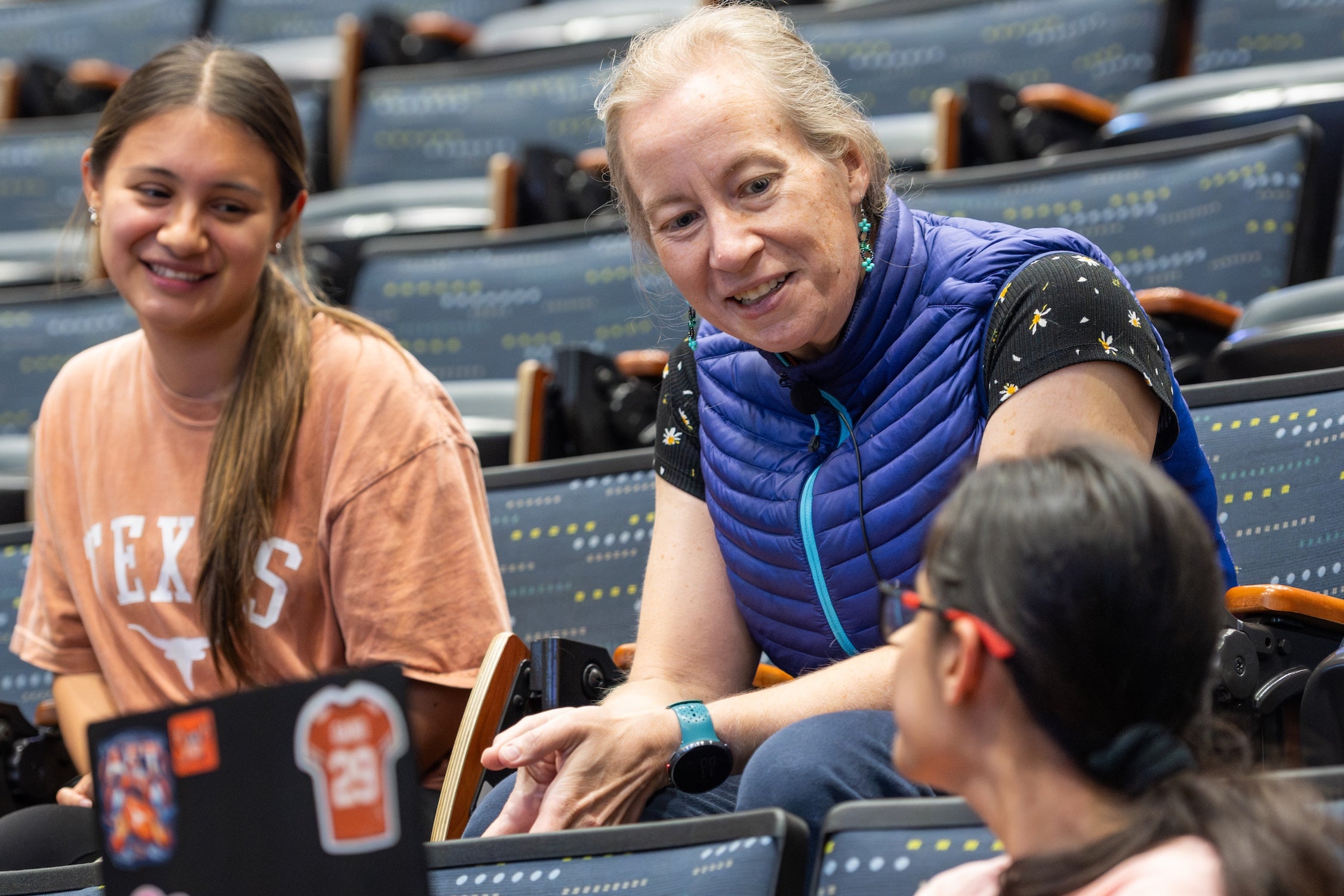Researchers Win $2 Million Grant to Develop Atomically Thin Semiconductors
Xiaoqin Elaine Li's team could help enable bendable computer screens and wearable electronics
A research team led by Xiaoqin Elaine Li, an associate professor in the Department of Physics at The University of Texas at Austin, has been awarded a grant of $2 million over the next four years from the National Science Foundation (NSF) to research and develop thin, flexible semiconductors that might eventually lead to bendable computer screens and wearable electronics.
The team includes Ananth Dodabalapur, Chih-Kang Shih and Keji Lai from UT Austin and Mei-Yin Chou from the Georgia Institute of Technology. They plan to research a new class of semiconductors made of layers that are only a few atoms thick.
"These new materials may eventually allow us to place electronic and photonic devices on a variety of surfaces because of their light weight and flexibility," says Li.
Other researchers have developed some rudimentary devices based on these semiconductors, but this team plans to improve the design and efficiency of these devices. According to the team members, these semiconductors will lay the foundation for improved optoelectronics devices that may eventually be integrated with silicon, the material that is used abundantly in the microelectronics industry.
"One thing that stood out about our team was that we focus on understanding the fundamental properties of these novel materials," says Li. "Such understanding will enable a more effective development cycle for the devices that we aim to demonstrate, such as lasers and detectors."
In addition to the research program, the NSF grant supports the development of a new graduate course, "Frontier in Optoelectronics Based on Atomically Thin Materials: Device and Material Science." Li says that the complementary scientific expertise of the team members will give graduate students the broad perspective they need to understand this research frontier.
The NSF program, "Emerging Frontiers in Research and Innovation: Two-Dimensional Atomic-layer Research and Engineering (2-DARE)," is highly competitive. Only 10 out of 122 teams that initially submitted a pre-proposal were selected for an award.




